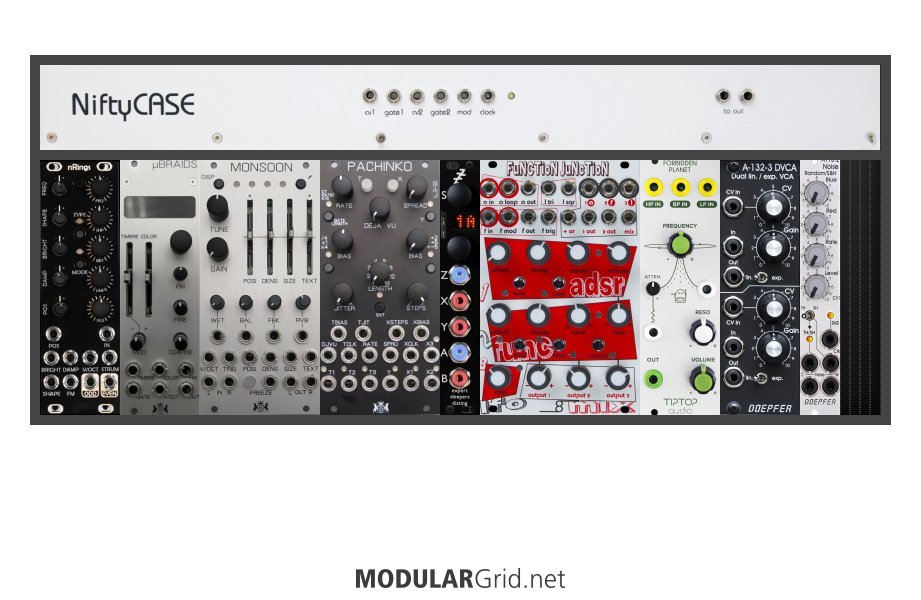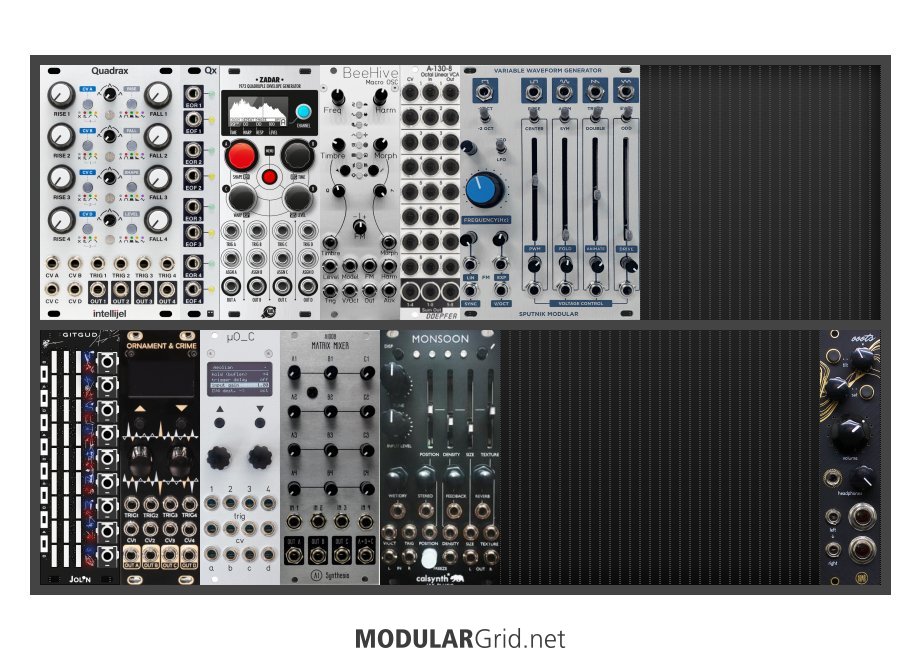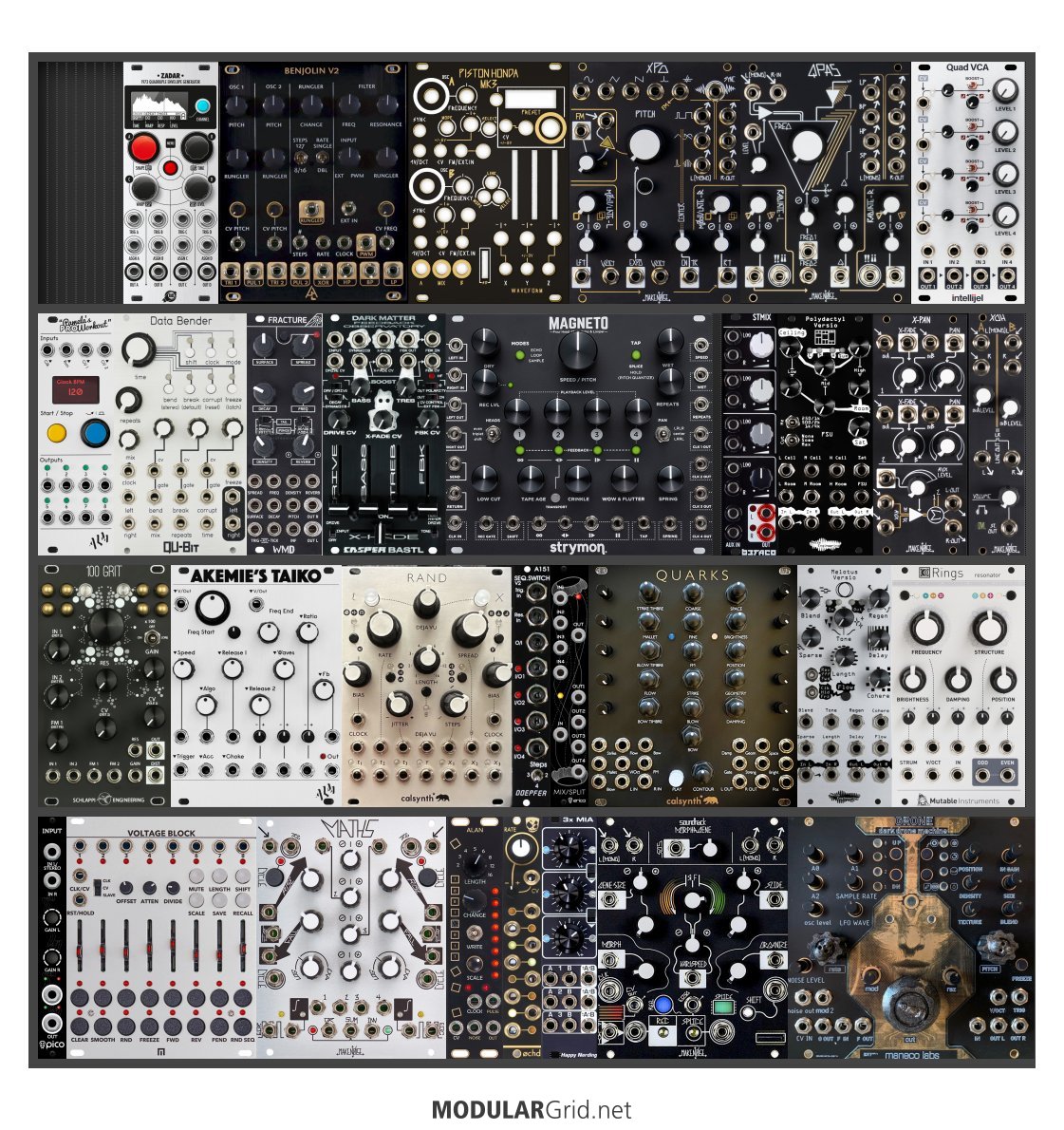I agree you are a bit modulation heavy... and utility light... in this size case and for that number of modules...
take a look at my signature file (below) the formula is for how to get the most versatility for the least expense... have a good long think about it... and then come and ask questions - some might be why & what, for example...
the b-company thing is your own personal decision, but it's not just about cloning & really not the clones of older stuff like the roland 100 series (or the 2500 series or even a 2600) - it's the clones of modules that are still in or just out of production etc that people take the most exception to and it's not just modules - they've been doing this for decades with all sorts of stuff, skirting legalities/ethics etc and often poorly and Uli is well, not that nice a guy, whereas lots of the smaller manufacturers are... and they often at least try to innovate whereas b-company generally don't... they're a big company and all the other modular manufacturers really are the small guys that need the support
but there's at least one other guy that a lot of people won't buy things from...
from what I can tell most people don't want to give their cash to racist misogynists, but it's your money, do with it what you want - personally I try not to give money to them, but you can't totally escape giving money to Uli anyway - it's more how much you give them as they own a major synth component (ICs etc) manufacturer - which a lot of modules use components from (becauses there is no other source in a lot of cases)
just because it's a hobby doesn't mean it should be cheap (or vice versa) lots of us humans spend a large amount of our disposable income on our hobbies - & not just modular synths... I can think of lots of hobbies that are, or at least can be, a lot more expensive... and even if you don't have much money, doesn't mean you should necessarily just buy modules at the cheaper end - it just means it takes longer (& possibly a bit more discipline) to buy some modules you might want/need... it's not a race...it's you building your own custom synthesizer... don't expect it to be particularly any cheaper than any other custom/professional level musical instrument (take a look at fender or gibson custom shop guitars or cellos & bows for them for examples) , at least not in the long term... 100/month is not that much, but over 10 years it's 12000... and unlike a lot of other hobbies it will probably still maintain a decent chunk of that in value - especially if you buy more desireable modules & especially compared to beer appreciation, for example - & you'll have got at least the same enjoyment value out of it
but beware of GAS (gear acquisition syndrome) - most of us get a bout from time to time and suddenly all (or most of) your disposable income for a few months or years is gone into the modular
as for cases - to me the mantis is one of the best bang for buck (size/cost/manufacturer reputation/decent power supply) cases out there and a much better starter case than most because of it... no crappy built in midi->cv or audio outs etc (which you may or may not need) which at least to me defeat the "I'm building my own custom instrument" part of modular - but then I don't have either midi->cv or output modules & I've got a fair few & a fair mix of modules from different manufacturers (iirc it was about 40 different manufacturers at last count), but there is nothing random about it - they all serve a purpose...
your question regarding cases is interesting - and depends on a lot of factors - what is a big case? what is a small case? how many is a few? how long is a piece of string?
I have 8 cases of which the smallest is 6u 72hp and the 2 largest are 9u 104hp... lots of people have fewer cases, lots have more cases - possibly bigger or smaller...
I've built 4 of my cases from wood & components myself - functional, but aesthetically challenged is how I'd describe them... you can save a bit of money this way, but not necessarily that much... rails, threaded inserts and decent power supplies cost a significant part of the total cost at the lower end - I reckon those for my 9us (2 104hp, 2 84hp) cost about 2/3rds of a mantis per case and when you factor in time for construction, tools etc etc... personally I wouldn't entertain building anything smaller than 6u (but they're still small cases to me)
if you are going down this route though - befaco make some excellent DIY able power supplies - I have 5 of their excalibus power supplies and they are very good (really very quiet) - and easy, if tedious builds (24 power headers * 16 solder joints per header) - if you can't solder or don't want to learn (always useful for building modules) then they're not that much more to buy ready made and still good value (don't skimp on power supplies)
"some of the best base-level info to remember can be found in Jim's sigfile" @Lugia
Utility modules are the dull polish that makes the shiny modules actually shine!!!
sound sources < sound modifiers < modulation sources < utilities


